Related Research Articles

The Smithsonian Institution, or simply the Smithsonian, is a group of museums, education and research centers, the largest such complex in the world, created by the U.S. government "for the increase and diffusion of knowledge." Founded on August 10, 1846, it operates as a trust instrumentality and is not formally a part of any of the three branches of the federal government. The institution is named after its founding donor, British scientist James Smithson. It was originally organized as the United States National Museum, but that name ceased to exist administratively in 1967.
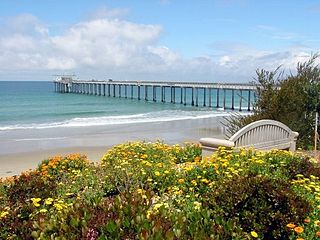
Scripps Institution of Oceanography (SIO) is the center for oceanography and Earth science at the University of California, San Diego. Its main campus is located in La Jolla, with additional facilities in Point Loma.

The California Academy of Sciences is a research institute and natural history museum in San Francisco, California, that is among the largest museums of natural history in the world, housing over 46 million specimens. The academy began in 1853 as a learned society and still carries out a large amount of original research. The institution is located at the Golden Gate Park in San Francisco.

The National Museum of Natural History (NMNH) is a natural history museum administered by the Smithsonian Institution, located on the National Mall in Washington, D.C., United States. It has free admission and is open 364 days a year. With 4.4 million visitors in 2023, it was the third most-visited museum in the United States.
The Aspen Institute is an international nonprofit organization founded in 1949 as the Aspen Institute for Humanistic Studies. It is headquartered in Washington, D.C., but also has campuses in Aspen, Colorado, its original home.

The Smithsonian Tropical Research Institute is located in Panama and is the only bureau of the Smithsonian Institution based outside of the United States. It is dedicated to understanding the past, present, and future of tropical ecosystems and their relevance to human welfare. STRI grew out of a small field station established in 1923 on Barro Colorado Island in the Panama Canal Zone to become one of the world's leading tropical research organizations. STRI's facilities provide for long-term ecological studies in the tropics and are used by some 1,200 visiting scientists from academic and research institutions around the world every year.

Birch Aquarium is a public aquarium in La Jolla, a community of San Diego, California. It serves as the public outreach center for Scripps Institution of Oceanography at the University of California, San Diego, with over half a million people visiting the aquarium each year.

The San Diego Natural History Museum is a museum in Balboa Park in San Diego, California. It was founded in 1874 as the San Diego Society of Natural History. It is the second oldest scientific institution west of the Mississippi and the oldest in Southern California. The present location of the museum was dedicated on January 14, 1933. A major addition to the museum was dedicated in April 2001, doubling exhibit space.
David William Steadman is a paleontologist and ornithologist, and Curator Emeritus of ornithology at the Florida Museum of Natural History at the University of Florida.

Margaret Anne Cargill was an American philanthropist and heiress to part of the Cargill fortune.
The A. Verville Fellowship is an American senior scholarship established in the name of aviation pioneer Alfred V. Verville at the Smithsonian Institution's National Air and Space Museum. The Verville Fellowship is a competitive nine- to twelve-month in-residence fellowship for researching the history of aviation. The fellowship includes a $50,000 stipend with limited additional funds for travel and miscellaneous expenses.
Nancy Knowlton is a coral reef biologist and a former Sant Chair for Marine Science at the Smithsonian National Museum of Natural History.
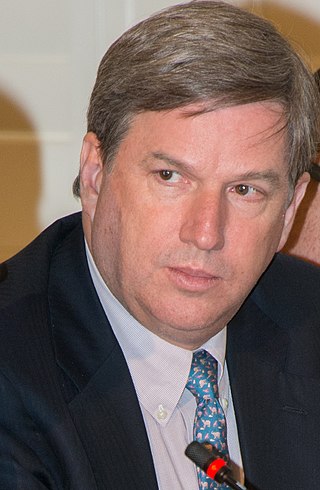
Cristián Samper is a Colombian-American tropical biologist specializing in conservation biology and environmental policy. He is the Managing Director and Leader of Nature Solutions at the Bezos Earth Fund. He served as President and CEO of WCS from 2012 to 2022. He was the Director of the Smithsonian Institution's National Museum of Natural History, the world's largest natural history collection, from 2003 to 2012, and served as acting Secretary of the Smithsonian from 2007 to 2008, the first Latin-American to hold the position. In April 2015, Samper was inducted into the American Academy of Arts and Sciences.
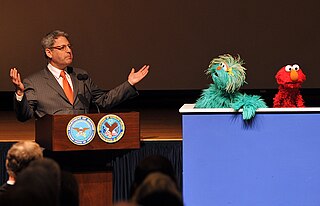
Gary Evan Knell is a senior advisor at the Boston Consulting Group (BCG) in Media and Social Impact. He was previously the Chairman of National Geographic Partners. Formerly, he was president and CEO of the National Geographic Society. He joined National Geographic as chief executive in January 2014. He has been a member of the Society's board of trustees since April 2013 and has served on the board of governors of the National Geographic Education Foundation since November 2003.
Elmer Yale Dawson was an American botanist, phycologist, taxonomist, ecologist, and naturalist writer. He popularized science and natural history with his books and articles on topics ranging from California cacti and North American cacti, to California seashore plants and marine algae, desert plant ecology, salt marsh wetlands, and anthropology topics including ethnohistory and ethnobiology of Seri Native American Indian culture of the northern Gulf of California.
The National Medal for Museum and Library Service is an award given annually by the Institute of Museum and Library Services (IMLS) to American libraries and museums with outstanding service to their communities. The IMLS refers to the medal as "the nation’s highest honor conferred on museums and libraries for service to the community." The award is typically presented by the First Lady of the United States.
Tyson Royal Roberts is an American ichthyologist. He has been described as "the world's foremost authority on Regalecus".
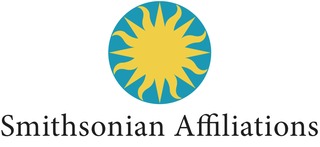
Smithsonian Affiliations is a division of the Smithsonian Institution that establishes long-term partnerships with non-Smithsonian museums and educational and cultural organizations in order to share collections, exhibitions and educational strategies and conduct joint research. Partner organizations are known as "Smithsonian Affiliates".
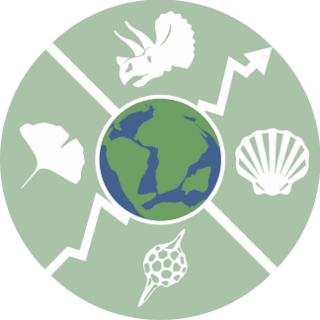
The Paleobiology Database (PBDB) is an online resource for information on the distribution and classification of fossil animals, plants, and microorganisms.

Ayana Elizabeth Johnson is a marine biologist, policy expert, and conservation strategist. She is the co-founder of Urban Ocean Lab, a think tank for ocean-climate policy in coastal cities, and the Roux Distinguished Scholar at Bowdoin College. She is the author of What If We Get It Right? Visions of Climate Futures (2024).
References
- ↑ "Natural History Museum names new president". San Diego Union-Tribune. 2016-04-05. Archived from the original on 2024-10-06. Retrieved 2024-10-05.
- ↑ "Judy Gradwohl: President and CEO". The Nat. Archived from the original on 2024-10-06. Retrieved 2024-10-05.
- ↑ Shulman, Ron (2021-09-09). "Someone San Diego Should Know: Judy Gradwohl". San Diego Union-Tribune. Archived from the original on 2024-10-06. Retrieved 2024-10-05.
- ↑ "The Nat Awarded $800K to Create Urban Nature Alliance with L.A., Bay Area Groups". Times of San Diego. 2024-01-13. Archived from the original on 2024-01-12. Retrieved 2024-10-05.
- ↑ "Judy Gradwohl - Field notes, 1978-1979 for project 17150 | Smithsonian Digital Volunteers". transcription.si.edu. Archived from the original on 2021-01-08. Retrieved 2024-10-05.
- ↑ Magazine, SD Metro (2016-04-05). "Natural History Museum Chooses Smithsonian Veteran as New CEO". SD METRO. Archived from the original on 2024-10-06. Retrieved 2024-10-05.
- ↑ "Visiting the Virtual Museum". Communication Arts. 2004-03-03. Archived from the original on 2024-10-06. Retrieved 2024-10-05.
- ↑ Wright, Jennifer (2015-05-07). "The Electronic Smithsonian". Smithsonian Institution Archives. Archived from the original on 2024-09-30. Retrieved 2024-10-05.
- ↑ Niekrasz, Emily (2019-05-22). "Wonderful Women Wednesday: Judy Gradwohl". Smithsonian Institution Archives. Archived from the original on 2024-06-19. Retrieved 2024-10-05.
- ↑ "Gradwohl, Judy". The Museum Leadership Institute. Archived from the original on 2024-07-09. Retrieved 2024-10-05.
- ↑ "Fellowships". Harvard Business School. October 5, 2024. Archived from the original on 2024-10-06. Retrieved 2024-10-05.
- ↑ "Science & Society Program Advisory Council". The Aspen Institute. Archived from the original on 2020-10-01. Retrieved 2024-10-05.